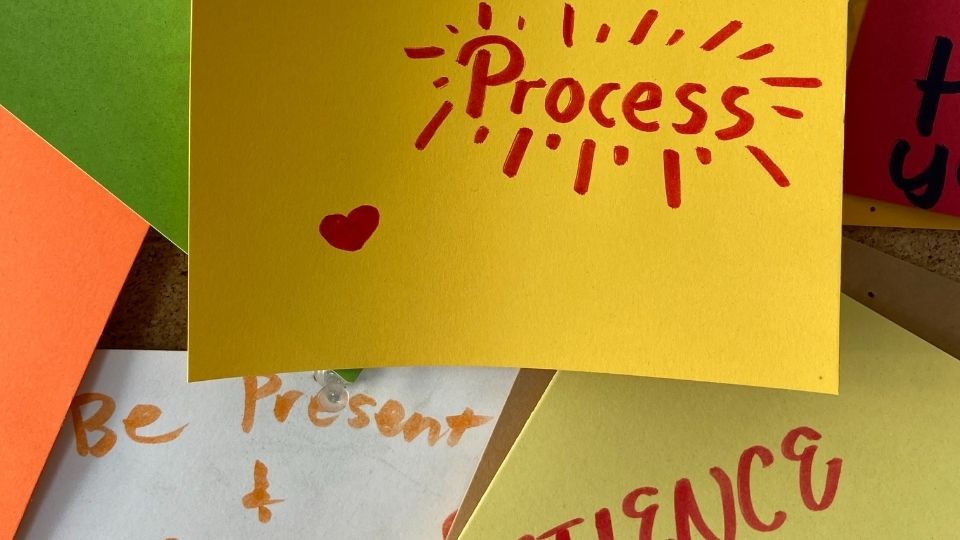Guest Post By Nicole Siegfried, Ph.D., CEDS – Chief Clinical Officer of Lightfully Behavioral Health (sponsor of Diana’s podcast Your Life in Process)
Listen to Dr. Siegfried and Diana discuss what to look for when interested in seeking therapy.
“The past no longer is, the future is not yet here; there is only one moment in which life is available, and that is the present moment.”
– Thich Nhat Hanh, Fear, Essential Wisdom for Getting through the Storm
Thich Nhat Hanh, one of the most well-known mindfulness masters and modern brokers of peace and love, died recently at the age of 95. I’m someone whose “Groundhog’s Day” life lesson is to learn to be in the present moment. As such, I have always been inspired by Thich Nhat Hanh, whose mission was to help people drop the chains of the past and silence the worries of the future to be in the here and now.
I’m a person who is frequently seduced by the Song of the Sirens of the future—with a promise of peace in making the unknown known. My personal work on the path to wellbeing is a continual practice of trying to live in the present moment, while the worries of the future play like elevator music in the background.
I’m not alone in my tendency to slip into unhelpful processes like future tripping. As humans, we have evolved to be better than ever at problem-solving, planning, and plotting. Although these skills have promoted human advancement, these kinds of mental gymnastics aren’t as helpful in addressing our psychological wellbeing.
My tendency to get lured into overplanning for the future is an example of a “maladaptive process” in Process-Based Therapy. The method I’ve learned of detaching from my thoughts to allow myself to be in the present moment is an example of an “adaptive process.” Process-Based Therapy (PBT) is a framework developed by Steven Hayes and Stefan Hoffmann that integrates interventions from a variety of evidence-based modalities to address processes that are at the root of human suffering.
Instead of using diagnoses and symptom profiles to guide treatment, therapists utilizing PBT identify and explore the processes that led to suffering for each client. Then, they apply treatment interventions that interrupt the maladaptive processes and build adaptive processes toward wellbeing.
A process can be defined as a way that a person interacts with themselves, others, and the world. Processes include ways people attend to the present moment, relate to their thoughts, use behaviors toward avoidance or willingness, and interact with their emotions. For instance, a person who comes into treatment may ruminate on their past; be fused with their thoughts; use behaviors to escape or numb, and avoid emotions and experiences that may be too activating. These processes, although sometimes helpful in the short term, contribute to suffering in the long term.
In PBT negative processes, such as those above, are disrupted and adaptive processes are developed and amplified to move into wellbeing. At Lightfully Behavioral Health we have classified processes into the following categories:
Cognitive Fusion & Shame → Mindful Self-Compassion
Emotional Dysregulation & Avoidance → Emotional Flexibility and Acceptance
Alienation & Disconnection → Interpersonal Connection
Meaningless & Stagnation → Values-Centered Living
Pivoting from maladaptive processes into adaptive process can provide a detour out of suffering and pave the way into wellbeing. This new framework of conceptualizing mental illness and treatment comes not a moment too soon.
We are currently in a mental health crisis in our country. In the US Census Pulse Survey of 2021, 37% of Americans reported moderate to severe anxiety and 30% of Americans reported moderate to severe depression, both up from approximately 7% prior to the pandemic. My hypothesis is that part of what got us here is that we are trying to use all of our problem-solving and planning processes to address our emotional pain, which is just intensifying our suffering. To make matters worse these same maladaptive processes often serve as a barrier to seeking care. We convince ourselves that if we just do more of what we’ve been doing, we will be able to move out of suffering. So, we don’t seek help. It’s not surprising that only 40% of individuals struggling with mental illness seek help and these individuals wait an average of 11 years before seeking treatment.
Many people don’t even realize what treatment options are available. There are several possibilities that can be considered in meeting each person’s unique needs.
| Outpatient | Intensive Outpatient (IOP) | Day Treatment (Partial Hospitalization- PHP) | Residential Care | Inpatient Psychiatric Care |
| *1:1 psychotherapy sessions
*Usually 1 time per week (can be more or less depending on client need) *Can be in person or telehealth |
*3-5 hours/day
*3-5 days/week * Allows for participating in life activities while receiving group and individual therapy. *Can be in person or telehealth |
*5-6 hour/day
*5-7 days/week *Provides a structured day of group and individual therapy |
*24/7 care to create structure and support | *Hospitalization with 24/7 monitoring to create safety and stabilization |
Sometimes, even exploring these options can feel overwhelming. I hope that reading this blog helps someone reach out who wouldn’t otherwise All of us suffer at times. I want people to know there is an outstretched hand to try something different. There are people who can help you make decisions about your treatment needs. Lightfully Behavioral Health is one of those places. You can call us and we can help you determine which level of care is best for you.
Being fully present in a life worth living is possible. You just have to learn new ways of processing to open the doors to that possibility.


